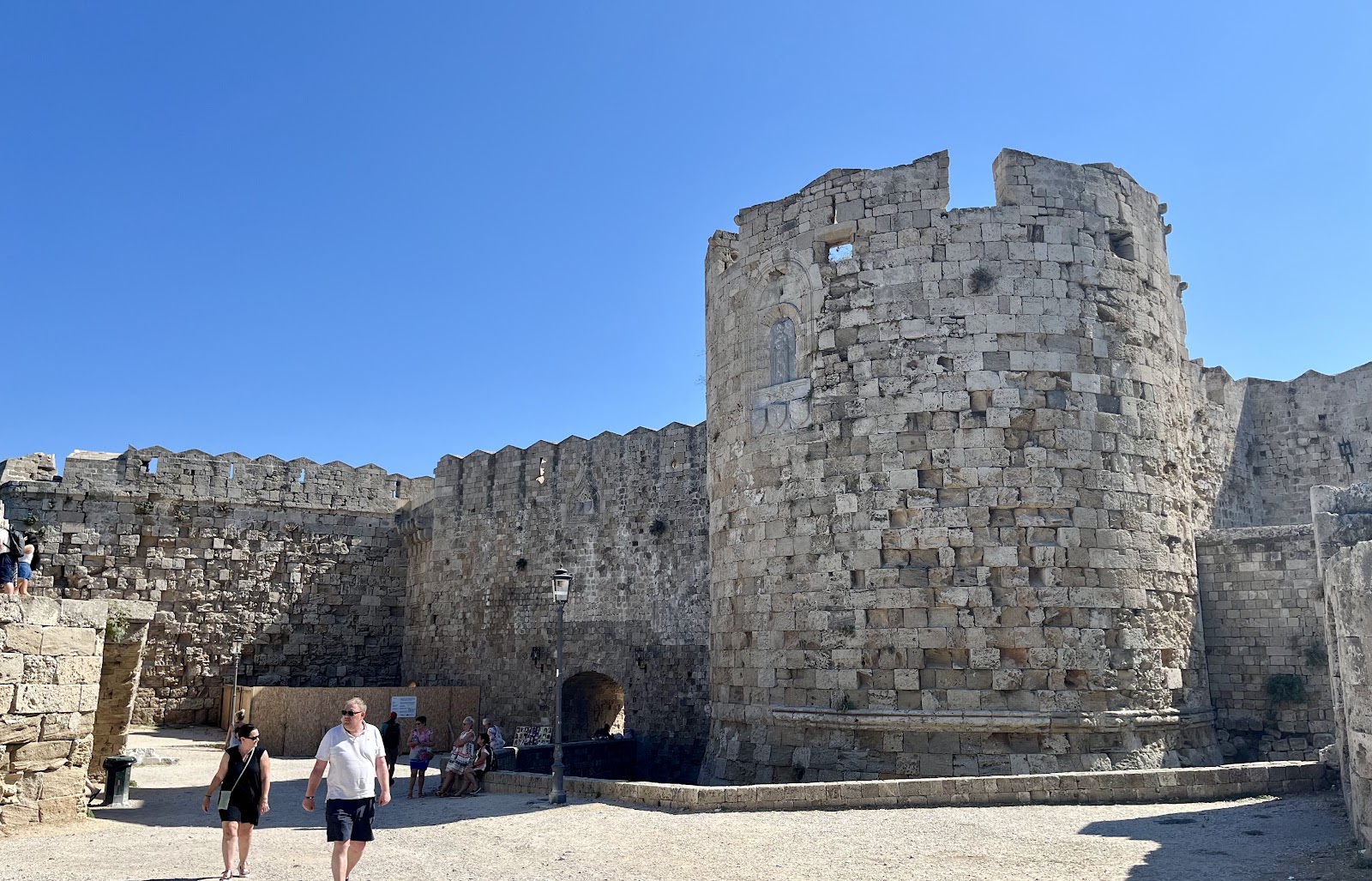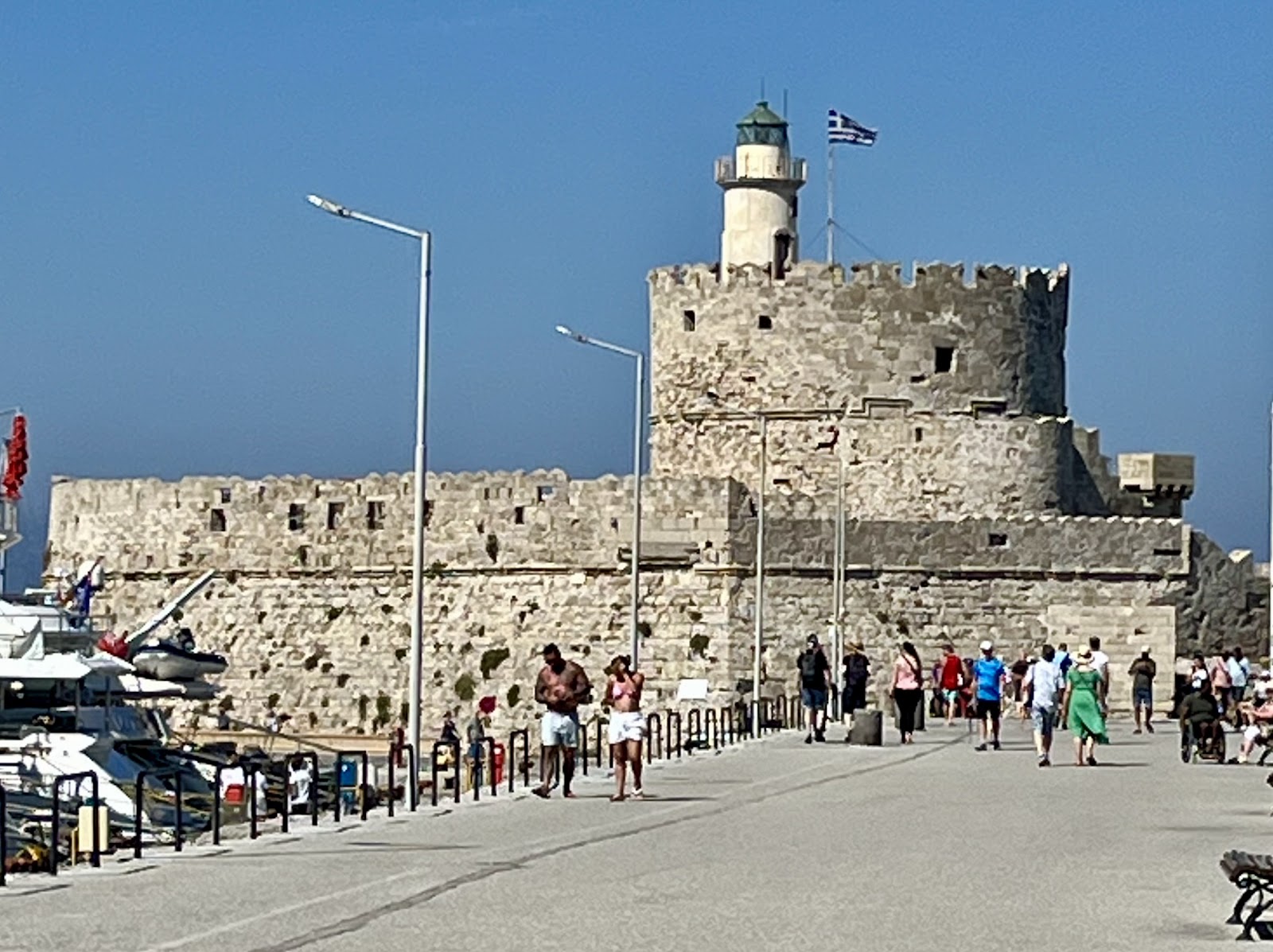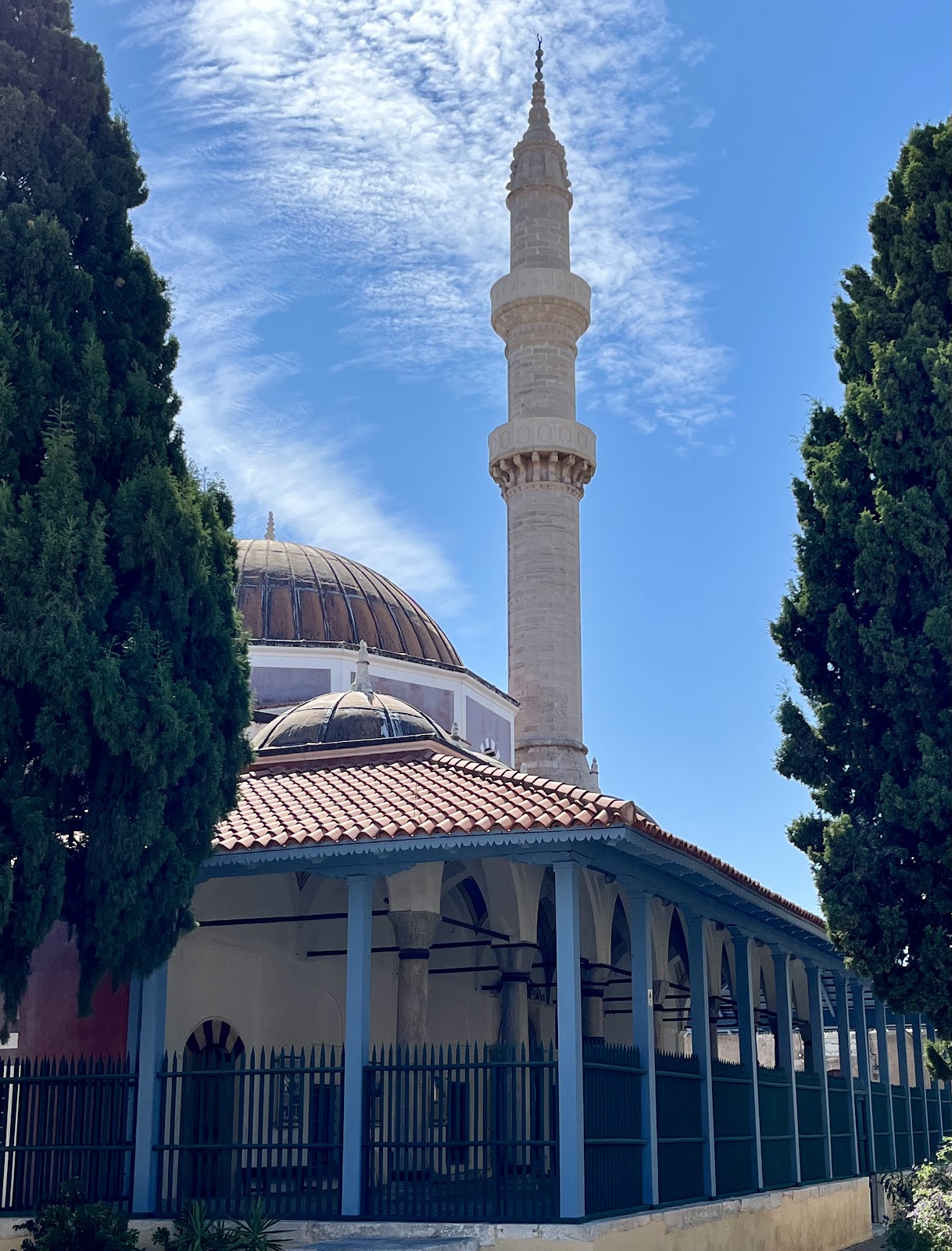Yesterday, we took a ferry from Marmaris to Rhodes. Although it's only an hour away, the trip takes nearly three hours each way, thanks to obsolete ferry booking systems and passport control. That leaves much less time than I hoped, but still enough to explore the walls and visit the main museums.
Founded in 408 BC, Rhodes Town grew in wealth and influence through its strategic location at the crossroads of the Aegean and Mediterranean seas. It became famous for the Colossus of Rhodes, one of the Seven Wonders of the Ancient World, which stood near the harbour until it was destroyed by an earthquake in 226 BC.
After the Roman period, Rhodes became part of the Byzantine Empire, but its importance waned. In 1309, the Knights of St. John (Knights Hospitaller) took control of Rhodes and turned the town into a fortified city. The knights built massive walls, castles, and the Palace of the Grand Master, much of which still stands today. Rhodes became a critical stronghold in the Crusades until 1522, when the Ottoman Empire captured Rhodes after a six-month siege. The knights were forced to leave for Malta, and Rhodes Town became part of the Ottoman Empire for nearly four centuries.
As you sail into the harbour, the iconic fort defending the mole, along with the harbour walls and gates, is obvious.
The old town is well-preserved, allowing for endless shops. I visited the Archeological Museum, which has exhibits from excavations across the island. There is not much about the military history, although many well-preserved pottery pieces have artwork of hoplites and others.
The best visit was to the Knight's Palace, an impressive fortification, but less impressive exhibits inside. The mosaics are excellent though.
There is a lovely model of a Knight's galley, which reminds us that piracy was an essential source of income. None in the harbour, but the modern Hellenic Navy was. Roussen Class, I think.
I was pleased to see that the Ottoman period was not eradicated from memory as is sometimes the case elsewhere. This is the Suleymaniye Mosque.
I had planned to go to the Commonwealth War Graves cemetery in the suburbs. It includes 65 men who died on Kos, whose graves were moved into this cemetery from the small Kos War Cemetery, which had to be closed in July 1957.
Overall, it was worth the effort just to see the fortifications, which are in excellent condition. Just a shame about the awful ferry system.














Given that their own manpower was limited (and that the Ottomans had seemingly limitless resources) the military orders had little option but to build strong defences. Sadly, as you discovered, there’s so much to see and time is scarce. Nice photos though 👏👏😎
ReplyDeleteCheers,
Geoff
Thanks. Glad to have got to Rhodes at last. The museums are only average but the walls and other fortifications are outstanding.
Delete